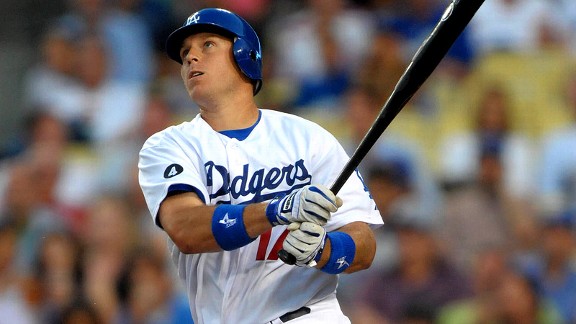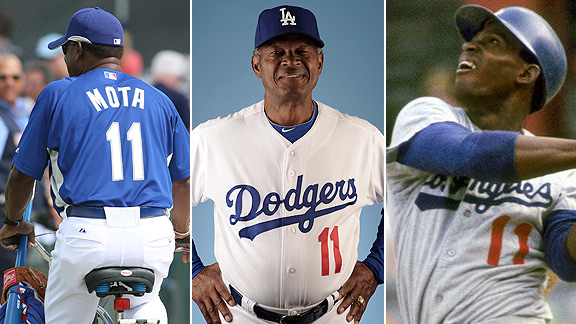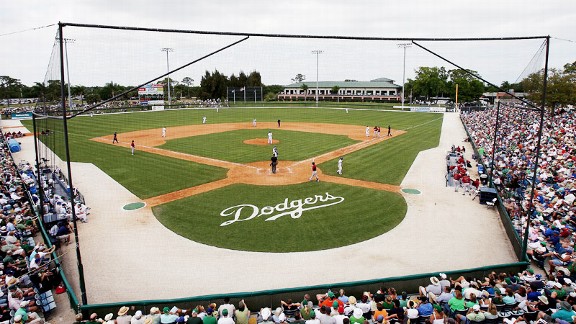Ned Colletti said Tuesday that it’s “unrealistic” that the Dodgers will sign Prince Fielder. Tony Jackson of ESPNLosAngeles.com has more.
Amid reports such as this from Ken Rosenthal and Jon Paul Morosi of FoxSports.com that Matt Kemp’s soon-to-be-official eight-year contract will pay him just over $10 million next season, it would appear that the Dodgers are in for one more spring of budget tightening as the ownership transition takes place. The contract for new second baseman Mark Ellis pays $2.5 million in 2012 and $5.25 million in 2013, plus incentives, Jackson reports.
The Dodgers’ main mystery right now is starting pitching, considering that the back end of their rotation is made up of Nathan Eovaldi and Dana Eveland and there’s no guarantee yet that Hiroki Kuroda will return.
- Though as a Dodger fan you might find it moot, David Schoenfeld of ESPN.com explores how much the Kemp deal will affect Fielder’s next contract.
- New stats-oriented director of contracts, research and operations Alex Tamin influenced the Ellis signing, general manager Ned Colletti told Ken Gurnick of MLB.com.
- The Ellis signing gets a mixed review from Chad Moriyama.
… For the money, Ellis should be a passable option considering the alternatives were not exactly appealing, nor were there strong internal candidates. However, while Ellis should be better going forward than he was in 2011, he still figures to be below the league average threshold, making him a fringy or mediocre starter. Additionally, there’s the real risk that he goes through a collapse in skill before the contract is up. So while the finances might pan out okay, this has to rate as an average deal at best.
- Here’s a January 2008 ode to Ellis from my former Baseball Toaster compadre Ken Arneson.
- New Dodger trainer Sue Falsone, interviewed by the Huffington Post, says the song that reminds her most of Los Angeles is “Don’t Stop Believin’,” but we’ll hold out hope for her success here anyway (link via Vin Scully Is My Homeboy).
- Former Dodger outfielder Xavier Paul unknowingly got caught up in an Australian Baseball League scam, reports Alexis Brudnicki of Baseball America and Jenifer Langosch of MLB.com.
- MLB.com also offered up its choices for top Dodger minor leaguers in 2011 by position. Compare them to the Dodger Thoughts Grain of Salt Midseason Minor-League All-Stars.
- River Ave. Blues passes along a piece that shows that the value of the batting average statistic was being questioned 96 years ago.
- In Tuesday’s mail, I received to my surprise (as a Los Angeles-based Hall of Fame non-voter) a 12-page full-color campaign brochure for Juan “Igor” Gonzalez’s Cooperstown candidacy. Matthew Pouliot of Hardball Talk rebuts the effort.
- I was a fan of the Baltimore Orioles’ move in the 1990s to an ornithologically correct bird on its caps, in part because of the repeated use by sportswriters of the word “ornithologically.” I also thought it looked cool, so I’m a little disappointed to see them go back to the cartoon bird.
- For your amusement/slash/horror: Life (the magazine, not the cereal) has chosen its 20 worst ever covers.




 Doug Benc/Getty ImagesA view from the final Dodger Spring Training game at Holman Stadium, March 17, 2008.
Doug Benc/Getty ImagesA view from the final Dodger Spring Training game at Holman Stadium, March 17, 2008.


